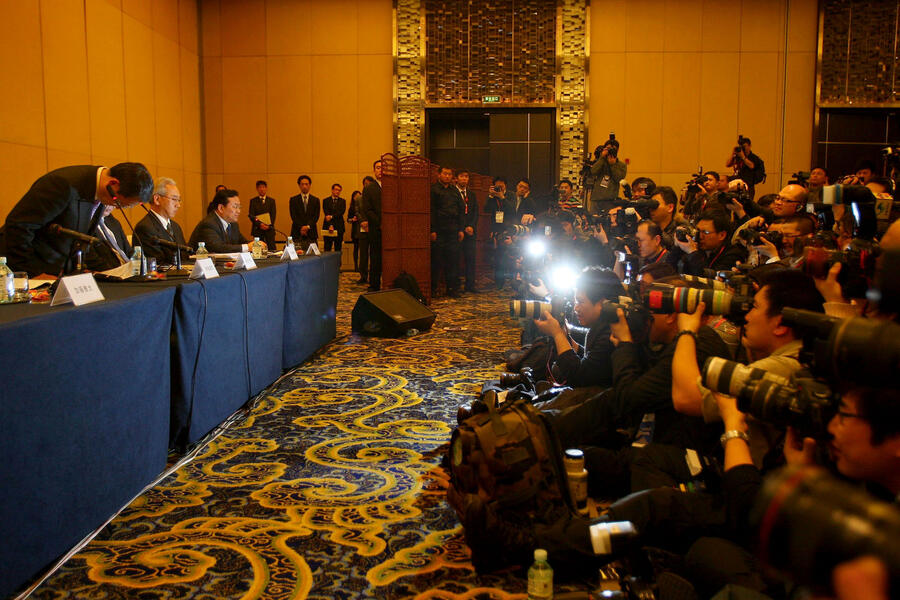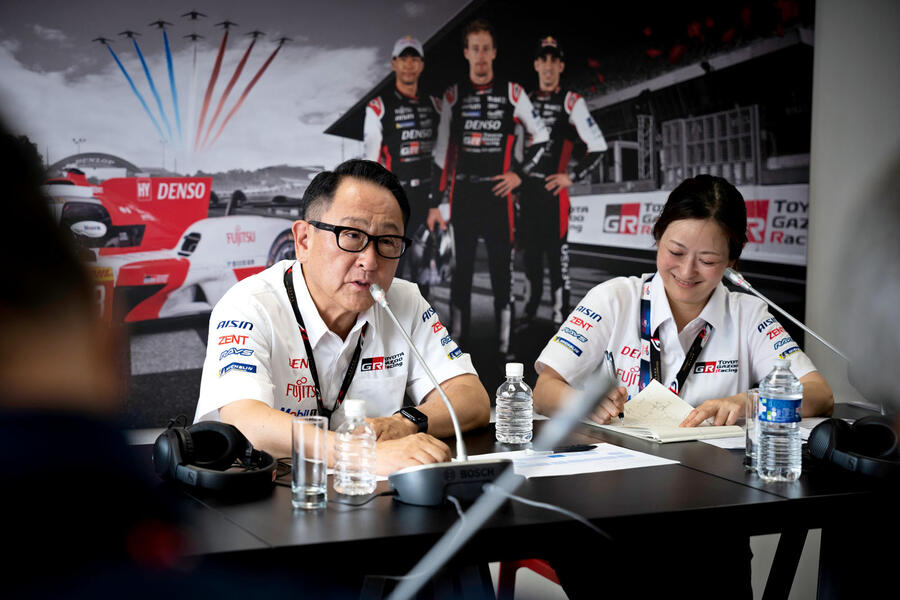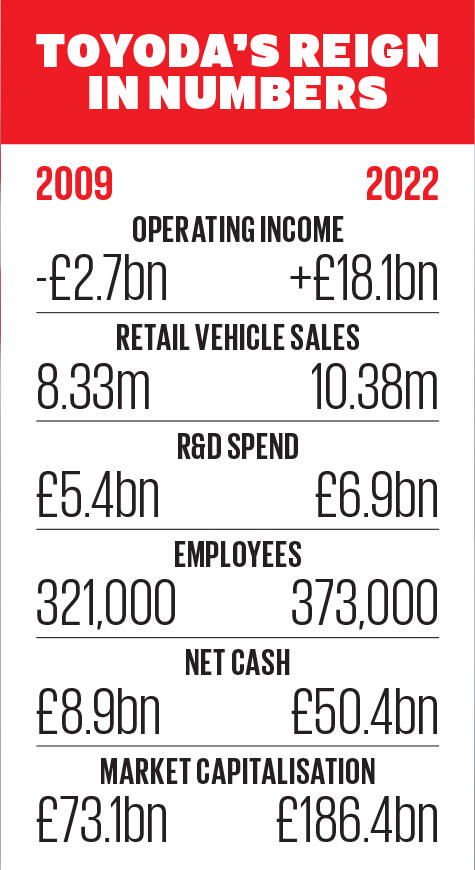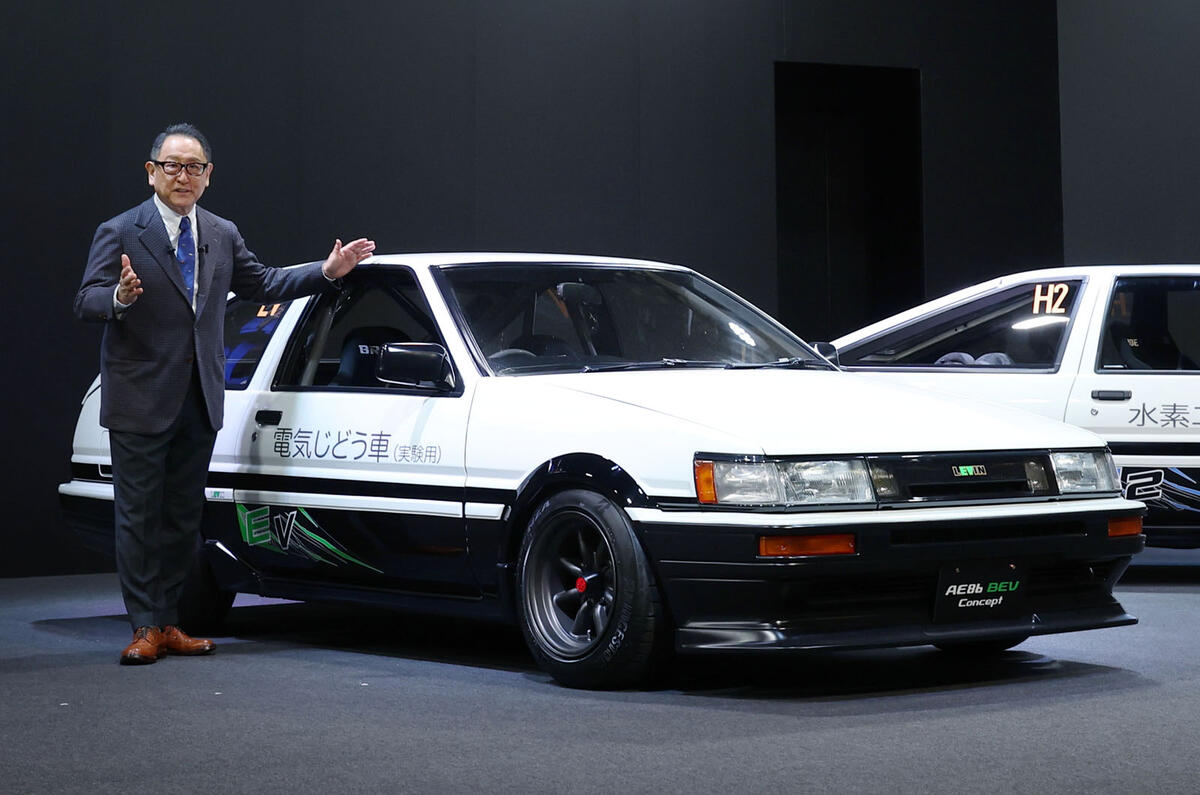February 17, 2010. The day Akio Toyoda, just months into his presidency of Toyota, bowed before US Congress in order to explain the unintended acceleration crisis that led to more than 10 million vehicles being recalled worldwide. And the day his working life finally made sense.
“When I went to the public hearing, I thought: ‘I’m done as company president,’” he said. “Until then, I’d been called the president’s son. I’d become untouchable through my life at the company. If someone was nice to me, others would say: ‘Why are you kissing up to the boss’s son?’ A lot of Toyota people didn’t like that. On the other hand, they worried that if they picked on me, I’d tell my father. So most employees would do the smart thing, which was to stay away and not develop relationships.
“Ever since I started at the company, I had no relationships. I wasn’t sure if Toyota needed me. It was a constant concern for me for a long time. At the public hearing, I felt like ‘I didn’t even last a year’. But that was the first time I felt like I might be able to do something for Toyota. That might be why I was here: to stake my life to protect the company. There is no better feeling. I didn’t run away, lie or distort the truth. That’s where my business model was completed. Since then, close to 14 years, I have fought to bring back the uniqueness to Toyota.”
There, in a single story, are flashes of the character that has transformed Toyota’s fortunes on almost every level. A leader, tenacious, vulnerable, humble and more. A man who feels his role was initially taking the firm through “crisis after crisis” – the earthquakes and subsequent tsunamis that beset Japan in 2011 adding a further twist of the knife in his early tenure – and who even now describes his work only as laying the foundations for his successor, Koji Sato, who took over as president in April.

“In retrospect, these 13 years have been a period of struggling to survive one day after the next,” said Toyoda. “When I look back, I think I have spent a lot of time taking care of the past. If I was to start again now with the same number of years ahead of me, I’d like to take the time to look into the future. What I hope I have created is an environment where Mr Sato can spend his time collaborating with the genba, our workers, while looking to the future.”
His comments confront a truth: as with all car makers, the transformation required by a zero-emissions future presents innumerable hurdles, potentially exacerbated by Toyota’s (deliberately, scientifically considered) slow start to battery-electric vehicle production. But they also mask the scale of change that has occurred at the company on his watch, not just in terms of growth metrics but also in the capability and desirability of its vehicles, the distinctive design of both Toyota and Lexus models and more.
Indeed, with the creation of Gazoo Racing, the multiple Le Mans and World Rally Championship wins and subsequent road cars like the GR Yaris and GR86, there is so much more to Toyoda’s Toyota than what went before. We talked at Le Mans with the race raging outside, and there’s no subject that gets him more fired up. “Racing helps us make better cars: we work in strict parameters to tight deadlines and we push the boundaries,” said Toyoda, who was at Le Mans to announce plans to race a hypercar powered by combusted hydrogen from 2026, when the race’s rules change.
Today, he proudly if modestly sums up, the company is best known not for its size or engineering prowess alone but for its products. For a man who famously hands out stickers to people he likes bearing a cartoon version of himself giving a thumbs up, with the inscription ‘I love cars’, there can be no greater achievement.
![]()
“One of the phrases I used when I started was ‘Let’s make ever better cars’,” said Toyoda, to explain how the transformation was achieved. “I kept repeating that phrase, rather than talking about specific targets, deliberately,” he added, smiling. “Think about it. If I’d defined ‘ever better cars’ around what I wanted to see in more detail, we would have ended up as a completely different company. Instead, by not giving an answer to the phrase, I had 370,000 employees thinking ‘what does he mean?’ and therefore starting to think for themselves. As a result, I believe Toyota was able to reinvent itself as a global company that revived itself based on its products.”
Another insightful slogan was ‘Best cars in town’. Simple, again, but this time pointed for what it didn’t say. Under Toyoda, the company’s centralised command structure was relaxed and regions were given autonomy to develop cars for their audiences. As such, it was no good striving to make the best cars in the world. That’s one reason why its product line-up stretched from 33 to 88 cars under his tenure.
“Probably there are people in the company who feel that I have stripped away the authority, the power that they had,” he said. “Those people probably have a negative feeling – but sovereignty should always lie in the place where the people are working.”
Those who have followed Toyoda’s daily fortunes point to that statement as underlining his determination to empower employees to be in charge of their future. Famously, at one meeting of the worker’s union, he chided the representatives for not being honest enough with him about the company’s shortcomings.

“It’s a negotiation, and the outcome may not be perfect for each side every time, but in the end we must do what is the best solution for both sides,” he said, by way of summarising his hard-line but collaborative approach.
Talking of seeking the best solutions, no appraisal of Toyoda’s tenure can end without tackling his approach to electrification. Starkly, last year Tesla sold 1.2 million battery-electric vehicles, Toyota 26,000. It’s probably fair to say that Toyoda knows the question is coming, and he immediately acknowledges that his answer is one that could land him in trouble.
“Whenever I speak about this topic, some people immediately think we are three laps behind the opposition in the EV race,” he said, with a slight grimace on his face. “I don’t have a model for the future so can’t be certain that I will be correct, but I can say that the enemy is carbon,” he said. “Given that, we should all be doing what we can – now and in the future – to reduce carbon. My belief is that there is not one right approach, but many that we should take to achieve that.
“The truth is that on Earth, our natural resources are finite. That is why I believe we should look at everything. BEVs are one of the most important technologies that can contribute to this – but not the only one. Today, there are about a billion people on Earth who do not have adequate connection to electricity. How can we say to them that BEVs are the only solution if we cannot be clear on how we supply the power to them?”
![]()
Now he has passed the baton to Sato, although as chairman he still intends to be very much present, guiding his successor, developing his ideas and, of course, maintaining his role as Toyota’s so-called Master Driver, under the Morizo pseudonym. Inevitably, he has his critics, but try as I might, among his competitors no one has a bad word to say about Toyoda’s achievements. In barely two cycles of cars, Toyoda has reinvented Toyota, and although there’s more – much more – still to be done, thanks to him it will be doing it from a position of strength.
Hydrogen keeps the 'lullaby' of racing alive
![]()
Combusting hydrogen – rather than using it to produce electricity in a fuel cell – is gathering pace at Toyota as a potential solution to reducing carbon emissions.
It holds particular appeal for Toyoda in motorsport applications, as it retains the sounds that are an intrinsic part of its appeal. “My translator used the word ‘noise’, but to me it is like a lullaby,” he said, joking in reference to why silent motorsport is unlikely to appeal to today’s audiences.
Already, Toyoda has driven a converted Yaris World Rally Car in a demonstration and raced and finished the Fuji 24 Hours in an adapted Toyota Corolla race car. One or both are expected to be in action at the Goodwood Festival of Speed too.
“When the general public hears about hydrogen, they think about explosions,” said Toyoda. “In fact, on the Ypres Rally, where I drove the Yaris, they were very worried when we first suggested driving the car. But when they asked who would drive, and they were told it would be me, they immediately allowed it. When the company boss is willing to drive the car, it is a great way of demonstrating that the technology can be safe.”

John Neville




Join the debate
Add your comment